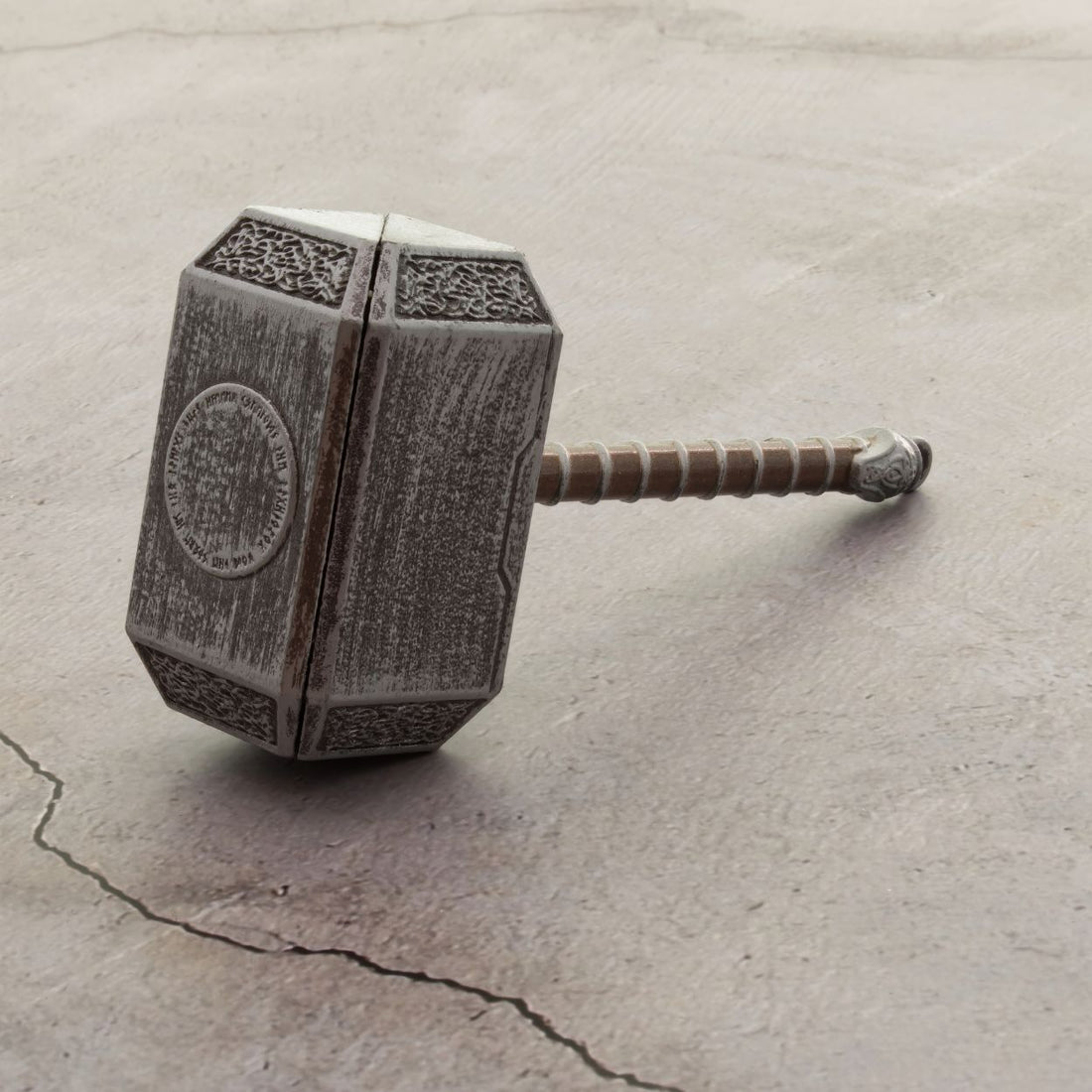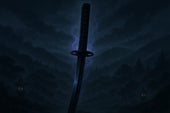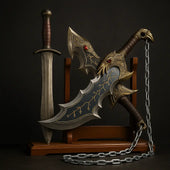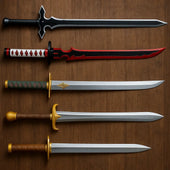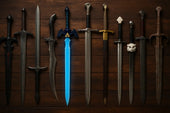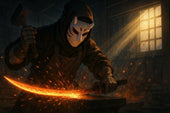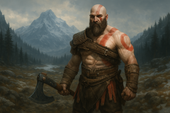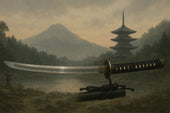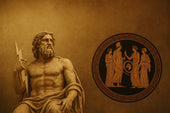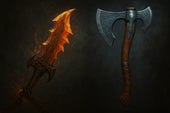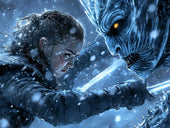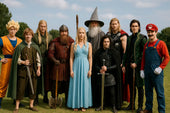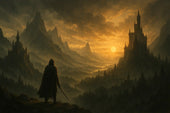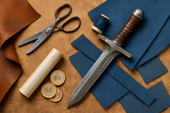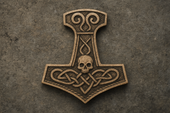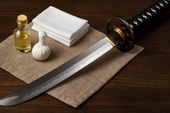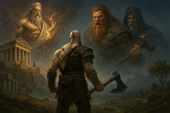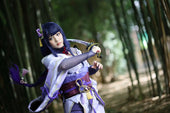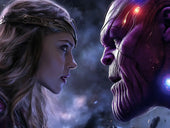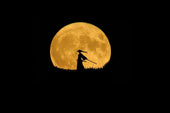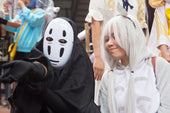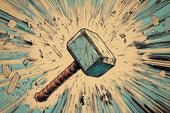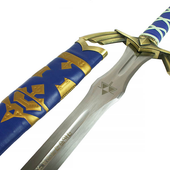Mjölnir—the mighty hammer of Thor, the god of thunder. Its image is synonymous with Norse mythology, a weapon of immense power that can level mountains and control the elements. But have you ever wondered how Mjölnir, Thor’s hammer, came into existence? Was it merely forged by mortal hands, or did it come to be through magic and divine intervention? The story of Mjölnir’s creation is a thrilling tale of gods, dwarves, and the ever-mischievous Loki.
In this article, we’ll dive deep into the mythic origins of Thors Hammer, uncover the unique circumstances of its forging, and explore the hammer’s significance in Norse mythology. Whether you're a fan of Viking lore or simply curious about this legendary weapon, you're in for a captivating journey. Ready to discover how Thor’s iconic hammer was born? Let’s go!
The Origins of Mjölnir in Norse Mythology
Mjölnir didn’t just materialise out of thin air—its creation was driven by necessity. Thor, the mighty protector of Asgard, needed a weapon powerful enough to defend the gods from their enemies, particularly the frost giants. The giants of Jotunheim were a constant threat, and the gods required a symbol of power and protection. Enter Thor's Hammer!
-
Thor and His Role as Defender:
Thor wasn’t just the god of thunder; he was the protector of both Asgard and Midgard (the human realm). His strength was unmatched, and he needed a weapon to match his might. Thor's Hammer was more than just a tool of war—it became a symbol of Thor’s duty to safeguard the realms from chaos. -
Symbolism of the Hammer:
Mjölnir wasn’t merely a weapon of destruction. It carried deeper symbolism within Norse culture. The hammer was associated with protection, fertility, and blessings. Thor used it not only to defeat enemies but also to consecrate marriages and bless new births. Its dual role as both a weapon and a tool for blessing gave Thor's Weapon a complex and revered status among the gods and mortals alike.
The Dwarves and the Forging of Mjölnir
The tale of Mjölnir’s creation is filled with intrigue, and it wouldn’t have come into being without the involvement of the dwarves—specifically, the legendary brothers Sindri and Brokkr. But, as with many stories in Norse mythology, Loki had a hand in setting the events in motion.
-
Loki’s Mischief and the Challenge:
It all started when Loki, ever the trickster, decided to play a prank on Sif, Thor’s wife, by cutting off her beautiful golden hair while she slept. Enraged, Thor threatened to crush Loki unless he found a way to restore Sif’s hair. In typical Loki fashion, he promised to resolve the problem by seeking the help of the dwarves. But Loki, never one to do things without stirring more trouble, issued a challenge to the dwarf brothers Sindri and Brokkr.
Loki bet his own head that they couldn’t create treasures as magnificent as those already made by the Sons of Ivaldi (another group of dwarves who had crafted magical items for the gods). Accepting the challenge, Sindri and Brokkr set to work in their forge.
-
The Forging Process and Loki’s Sabotage:
As Sindri and Brokkr began crafting their magical items, Loki, fearing that he might lose the bet, attempted to sabotage their efforts. Shapeshifting into a fly, Loki bit Brokkr repeatedly as he worked the bellows to keep the furnace hot. Despite Loki’s interference, the brothers managed to forge three powerful items—one of which was Mjölnir.
But there was a hiccup in the process. Loki’s sabotage caused a minor mishap, resulting in Mjölnir having a shorter handle than intended. Despite this, the hammer’s power was undeniable. It was heavy, unbreakable, and infused with magic, making it the perfect weapon for Thor.
Mjölnir’s Powers and Abilities
Even with its short handle, Mjölnir was far from flawed. In fact, the hammer possessed several extraordinary abilities that made it one of the most powerful weapons in Norse mythology.
-
Thor’s Ultimate Weapon:
Mjölnir quickly became Thor’s primary weapon in his battles against the frost giants and other enemies of Asgard. Its weight was so great that only Thor, with his immense strength, could wield it. With a single swing, Mjölnir could crush mountains, and when Thor hurled it, the hammer would fly with deadly accuracy. -
The Magical Boomerang Effect:
One of Mjölnir’s most remarkable features was its ability to return to Thor’s hand no matter where it was thrown. This magical boomerang effect meant that Thor never had to worry about losing his hammer in the heat of battle. The hammer would always find its way back to him, ready for the next strike. -
Blessings and Rituals:
Beyond its role in battle, Mjölnir was also used in various rituals and blessings. Thor wielded the hammer to consecrate marriages, ensuring fertility and prosperity for couples. It was also used in funerals and other ceremonies to offer protection and divine favour. In this way, Mjölnir was both a weapon of destruction and a symbol of life and renewal.
Mjölnir in Norse Mythology Tales
Mjölnir appears in many famous Norse myths, each one showcasing the hammer’s incredible power and importance in the cosmic battles between the gods and their foes. Here are some of the most iconic tales involving Thor’s hammer.
-
Thor vs. the Giants:
Many of Thor’s most famous battles involved Mjölnir, particularly his confrontations with the giants of Jotunheim. In these myths, Thor’s hammer became the ultimate equaliser, allowing him to defeat foes much larger and more powerful than himself. Mjölnir’s sheer force, combined with Thor’s strength, made the god an unstoppable force in protecting Asgard. -
The Theft of Mjölnir:
One of the most famous myths involving Mjölnir is the story of its theft by the giant Thrym. Thrym demanded the goddess Freyja’s hand in marriage in exchange for the hammer’s return. To retrieve Mjölnir, Thor disguised himself as Freyja, complete with a wedding dress and veil. During the “wedding feast,” Thor seized the opportunity to reclaim Mjölnir and promptly used it to defeat Thrym and his kin. This myth highlights both the hammer’s significance and Thor’s determination to protect it. -
Mjölnir in Ragnarok:
In the apocalyptic events of Ragnarok—the end of the world in Norse mythology—Mjölnir plays a crucial role. As the forces of chaos rise against the gods, Thor wields Mjölnir in his final battle against the giant serpent Jörmungandr. Though Thor ultimately slays the serpent, the poison from Jörmungandr’s bite leads to his demise shortly after. Mjölnir’s presence in Ragnarok underscores its importance not just in life, but in the death and rebirth cycles of the gods.
Mjölnir’s Influence in Modern Culture
Mjölnir’s legacy didn’t end with the Viking Age. In fact, its influence has only grown, extending far beyond the boundaries of Norse mythology and into modern popular culture.
-
Mjölnir in Popular Media:
The most recognisable modern depiction of Mjölnir is in Marvel Comics and the Marvel Cinematic Universe. Thor, portrayed as a superhero, wields Mjölnir as his primary weapon, much like his mythological counterpart. The hammer’s ability to summon lightning and return to its master is central to the character’s portrayal in both the comics and films. This pop-culture version of Mjölnir has introduced millions of people to the legendary hammer, making it an enduring symbol of strength and justice. -
Symbolism Today:
Beyond its appearances in media, Mjölnir remains a powerful symbol in modern times. It is often seen as a representation of strength, resilience, and protection. Many people wear Mjölnir amulets as a sign of these qualities, drawing on the hammer’s ancient associations with Thor’s role as protector of Asgard. As well as it being featured very prominently in the Marvel Cinematic Universe alongside its Stormbreaker counterpart! -
Mjölnir as a Religious Symbol:
In modern Heathenry and Ásatrú (a contemporary revival of Norse paganism), Mjölnir is used as a religious symbol. Practitioners wear Mjölnir pendants as a sign of their faith and a connection to the old gods. Much like in ancient times, the hammer represents protection and blessings, linking past and present in a continuum of spiritual belief.
The story of Mjölnir’s creation is a fascinating tale that weaves together the magic, rivalry, and divine power of Norse mythology. From its forging by the dwarves to its central role in Thor’s battles and blessings, Mjölnir is far more than just a hammer—it is a symbol of power, protection, and resilience.
Today, Mjölnir continues to captivate imaginations, both as a cultural icon and a symbol of faith. Whether you admire it for its mythological origins or its representation of strength and justice in modern media, Mjölnir’s legacy is as enduring as Thor’s might itself.


